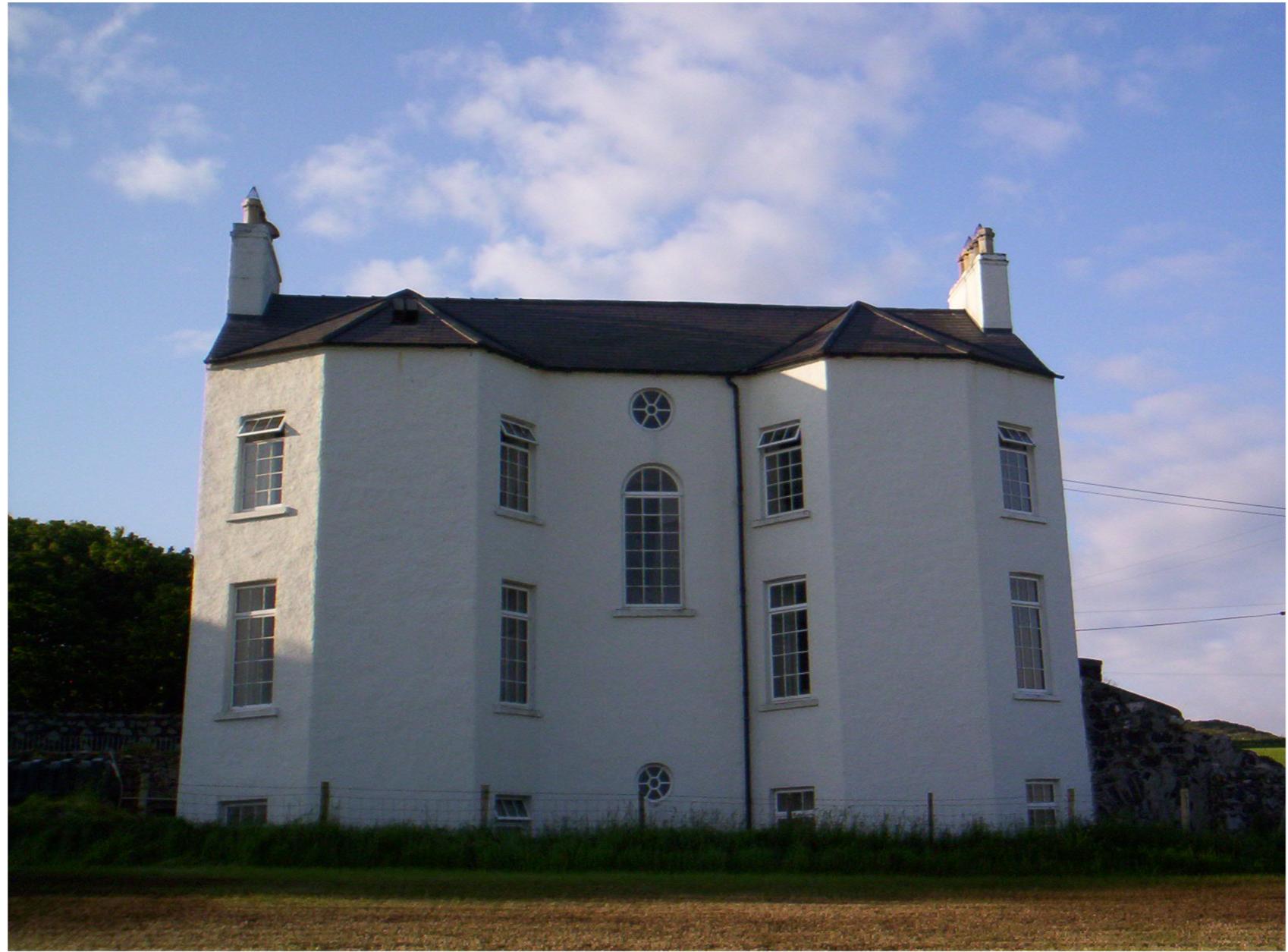MOUNT DRUID HOUSE
Dating from the late eighteenth century, Mount Druid House, seat of the present rector of the combined parishes, is situated less than a mile from the village of Ballintoy. Built on the townland of Magherabuy and set amongst 64 acres of glebe land, it is delightfully appointed with commanding views of the surrounding costal landscape and islands. Of solid Georgian construction, the continued existence of the rectory is assured through protection as a listed building. With exquisite walled gardens to the rear, the house with its curious half-hexagonal frontal bays boasts many charming and uncommon features, not least the absence of a front door! The house has been well maintained and has been the subject of a major refurbishment in 2005.
In many ways, the rectory is a standing testimony to the ingenuity and industry of its clerical 'architect' Revd Robert Trail (1754-1842) who was occupant from 1791 up to 1842. It was to him that Alexander Stewart of Acton made a grant of 40 Irish acres in 1788. It is recorded in the Minutes of Ballintoy Church that 'In May 1789 Mr. Trail began to build a Glebe House…changing the name of the place from Magherabuy to Mount Druid, on account of a Druid's temple now standing on the glebe'. The 'Druid's temple' which lies on a hill at the back of the property, is actually an ancient dolmen or passage grave, dating back to Neolithic times or approximately 5,000 BC to 2,500 BC.
Revd Robert Trail
Revd Robert Trail, a native of North Antrim, graduated from St. Andrews University in 1777. Having served as a parish deacon for just a week, he was immediately ordained as priest and subsequently appointed as rector of Ballintoy - an elevation, no doubt, aided in no small part by his uncle, the Right Revd James Trail, D.D., Bishop of Down and Connor! During a protracted and labour intensive incumbency spanning 65 years, Robert Trail oversaw the construction of Mount Druid House, had the parish church rebuilt, and in 1803 carried out a full parish census. Later in 1814, he wrote a detailed account of Ballintoy parish for Shaw Mason's Statistical Survey of Ireland. Born into a family with considerable academic talent, his brother William pioneered a hydro-electric tramway which carried passengers from Portrush to Bushmills, based on an original design never before seen in the transport world.
Having remained a lifelong bachelor, during summer of 1842 he expired at home in the rectory that he had lovingly built. His remains are interred in the south-west corner of Ballintoy cemetery. It is fitting and appropriate that his memory is preserved in a lovely stained glass window on the east side of Ballintoy Church, to a design illustrating the Ascension of our Lord.
© Copyright 2006 - Nigel G. R. Johnston M.A.

